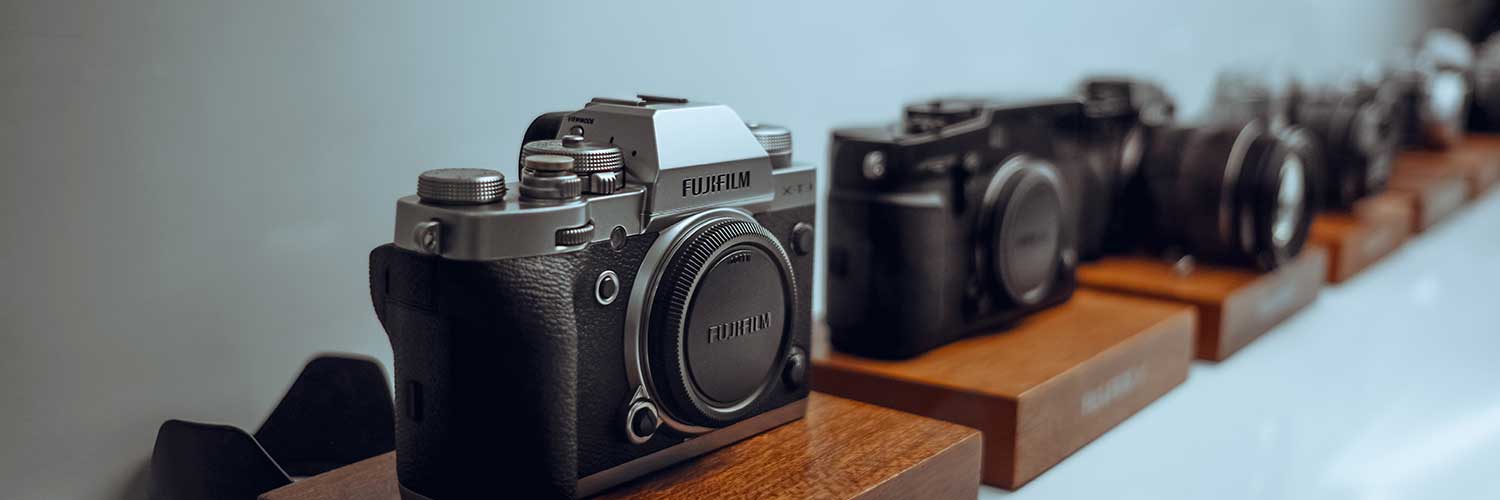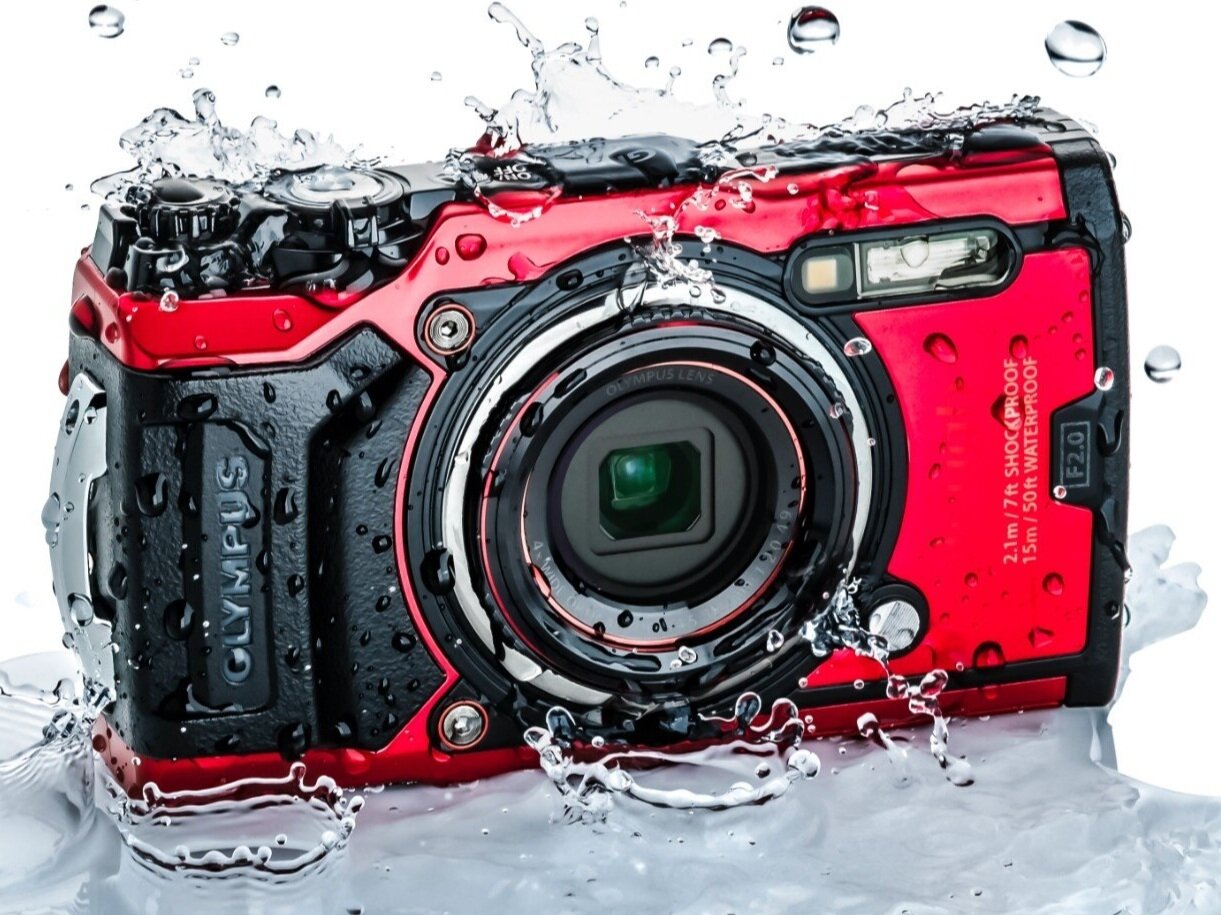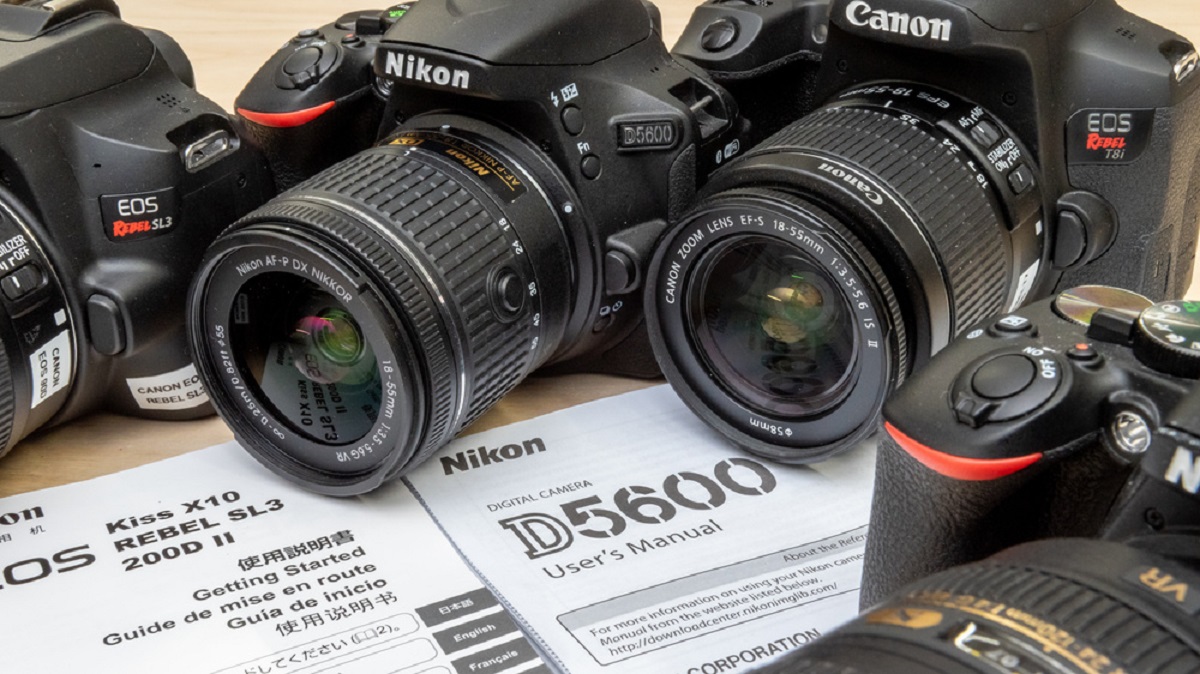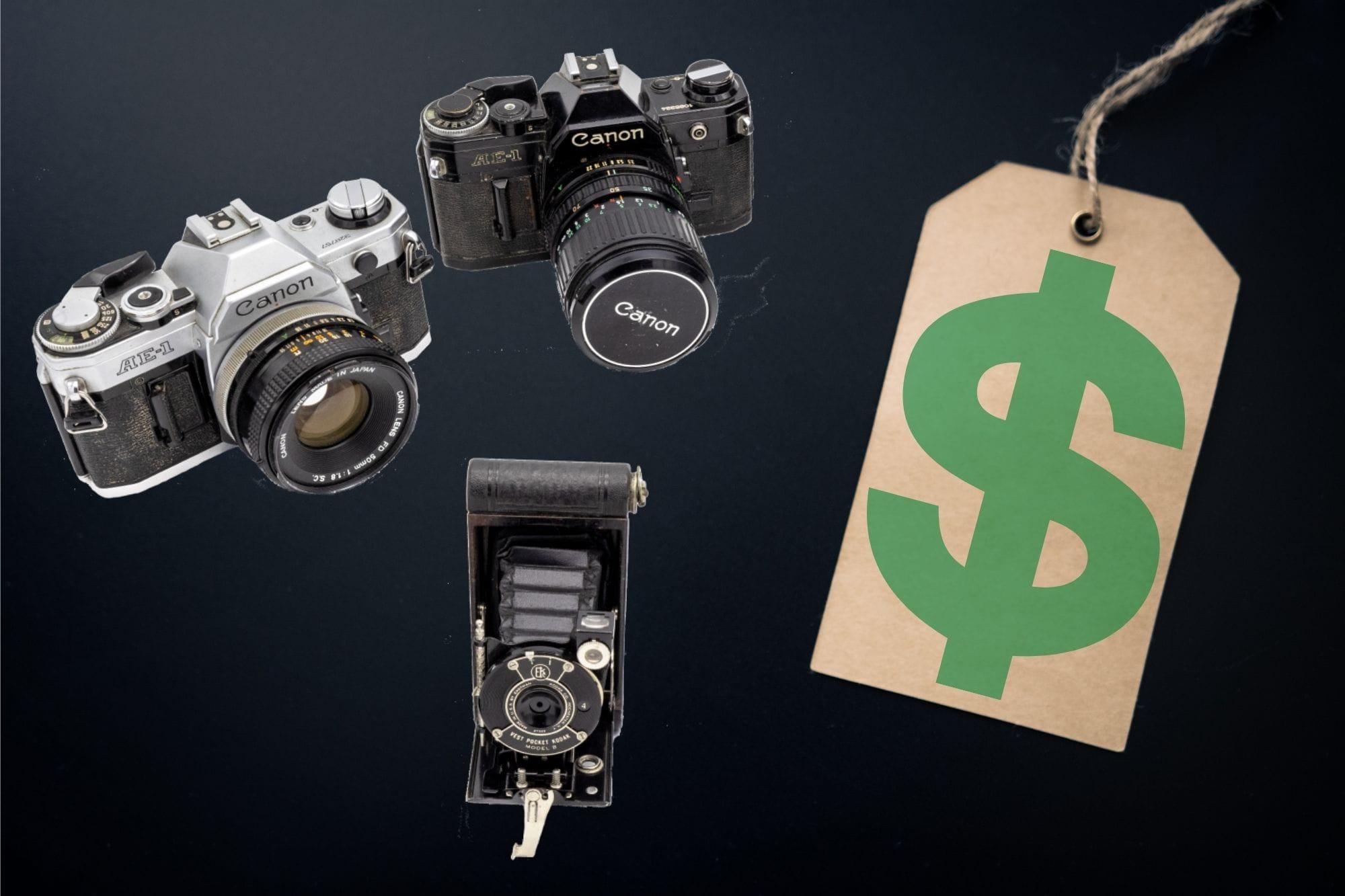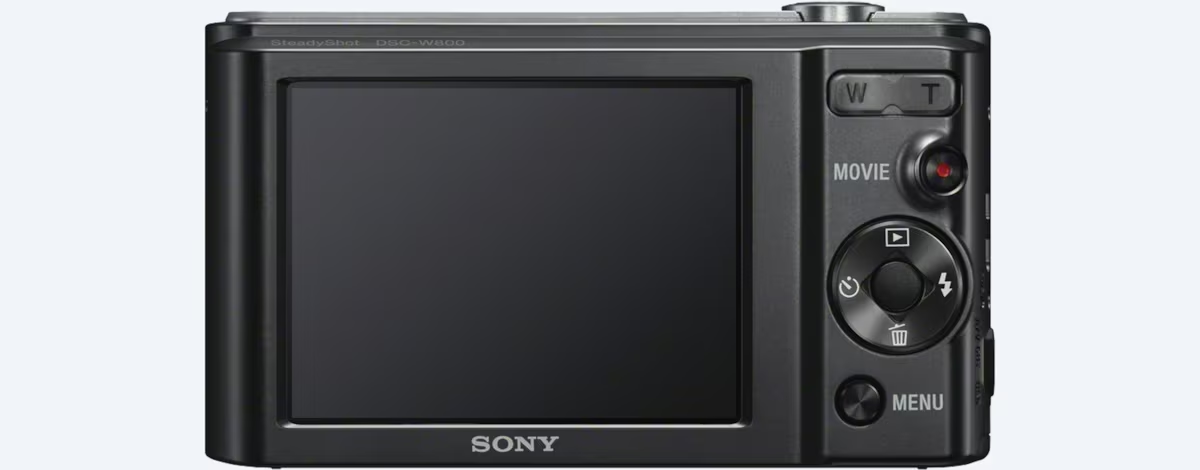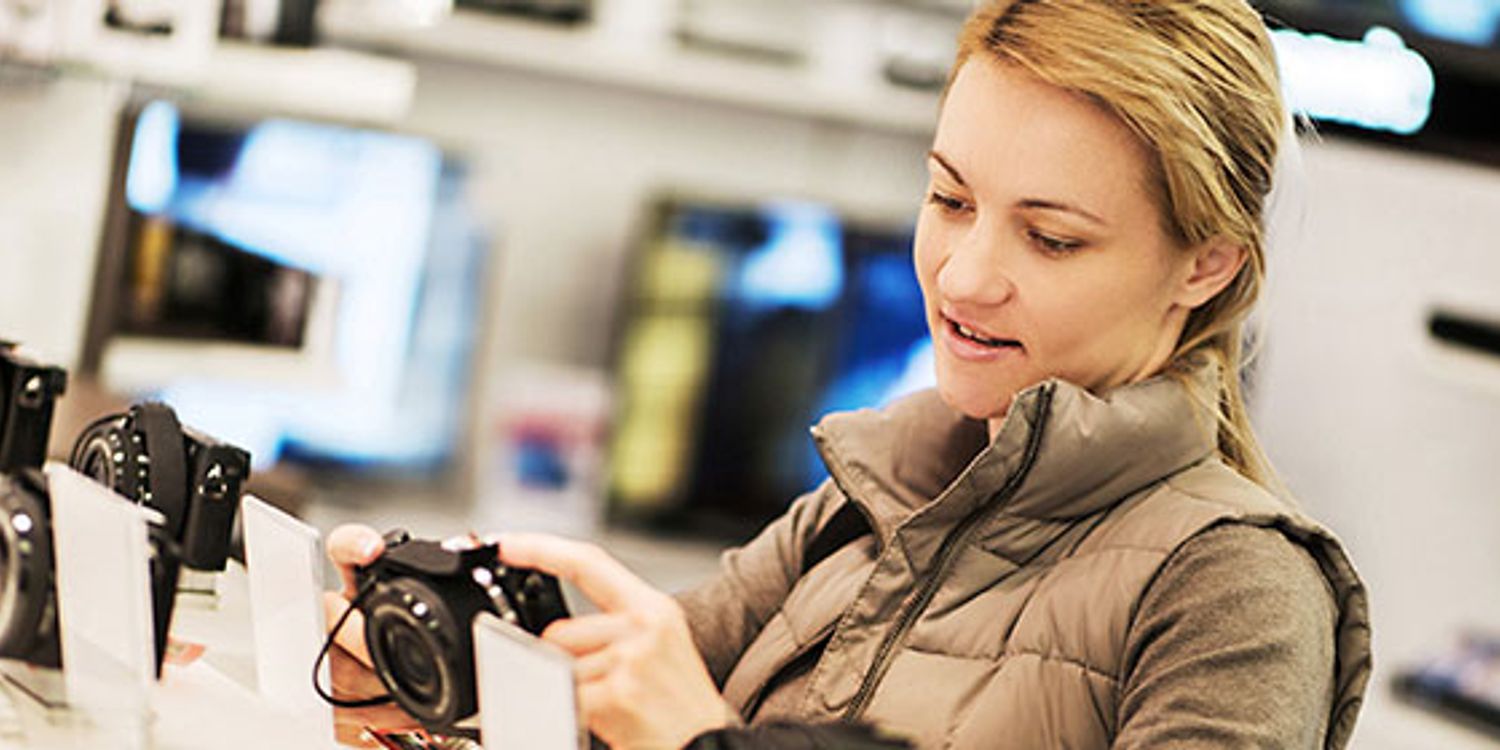Introduction
When it comes to capturing life’s precious moments, a digital camera is an invaluable tool. Whether you’re an amateur photographer or a seasoned professional, finding the right camera can make all the difference in capturing stunning images. However, with the plethora of options available in the market, it can be overwhelming to choose the perfect digital camera that suits your needs and preferences.
The aim of this article is to guide you through the key factors to consider when buying a digital camera. By understanding these factors, you will be better equipped to make an informed decision and find a camera that meets your requirements. From resolution and image quality to battery life and connectivity options, we will explore the essential aspects that will help you narrow down your options and find the digital camera that is right for you.
It is important to note that the perfect camera for one person may not be the ideal choice for another. The decision ultimately depends on your specific needs and budget. Some users may prioritize image quality and resolution, while others may value portability and ease of use. By exploring the various factors in detail, you can evaluate your priorities and make a well-informed choice.
Now, let’s dive into the essential features and considerations to keep in mind when buying a digital camera. Whether you’re planning to capture breathtaking landscapes, candid moments with loved ones, or stunning portraits, the right camera will empower and inspire you to take your photography to the next level.
Resolution and Image Quality
One of the most crucial factors to consider when purchasing a digital camera is the resolution and image quality it offers. Resolution refers to the number of pixels in an image, and a higher resolution means more detail and clarity in your photographs. Most digital cameras today offer a resolution measured in megapixels (MP).
For casual photography and sharing images on social media, a camera with a resolution of around 12-16 MP is usually sufficient. However, if you’re interested in professional photography or desire large prints, consider opting for a camera with a higher resolution of 20 MP or more.
Resolution alone does not guarantee excellent image quality. Other factors, such as the image sensor and image processing capabilities of the camera, also play a significant role. Look for cameras with larger image sensors as they tend to produce superior image quality, especially in low-light conditions.
Furthermore, pay attention to the camera’s image processing capabilities. Some cameras offer advanced noise reduction algorithms and superior color accuracy, resulting in sharper and more vibrant images.
When evaluating image quality, it can be helpful to read reviews and examine sample images captured by the camera you’re considering. This will give you a better understanding of the camera’s performance in various lighting conditions and shooting scenarios.
Remember, higher resolution and image quality often come with larger file sizes. Consider the storage capacity of the camera or invest in additional memory cards to accommodate the larger files.
Overall, prioritizing resolution and image quality will ensure that your photographs look crisp, vibrant, and professional. Choose a camera that offers a balance between resolution, image sensor size, and advanced image processing technology to achieve the desired results in your photography.
Sensor Size
Another crucial factor to consider when purchasing a digital camera is the size of its image sensor. The image sensor is the part of the camera that captures the light and converts it into a digital image. The size of the sensor affects image quality, low-light performance, and depth of field control.
Larger sensors generally allow for better image quality because they can capture more light, resulting in less noise and improved dynamic range. Cameras with larger sensors excel in low-light conditions, producing cleaner and more detailed images compared to cameras with smaller sensors.
There are various types of image sensor sizes available in digital cameras. Full-frame sensors, found in professional-grade cameras, offer the largest sensor size and provide exceptional image quality. However, they are also more expensive and can be bulkier in size.
APS-C (Advanced Photo System type-C) sensors are a popular choice for enthusiasts and semi-professional photographers. They offer a good balance between image quality and affordability. APS-C sensors are slightly smaller than full-frame sensors but still deliver impressive performance in terms of image quality and low-light capabilities.
For casual photography or entry-level cameras, consider cameras with micro four-thirds or smaller sensors. While these cameras may not provide the same level of image quality as full-frame or APS-C cameras, they are often more affordable, lightweight, and compact.
It’s important to note that the lens you use can also affect image quality and overall performance. Some cameras are compatible with interchangeable lenses, allowing you to choose lenses optimized for specific shooting scenarios and achieve greater flexibility in capturing your desired images.
Consider your photography needs and budget when choosing a camera based on sensor size. If image quality and low-light performance are top priorities, investing in a camera with a larger sensor, such as a full-frame or APS-C sensor, would be beneficial. However, if portability and cost are of utmost importance, cameras with micro four-thirds or smaller sensors can still deliver satisfactory results.
By understanding the significance of sensor size and considering your specific photography requirements, you can make an informed decision and select a camera with the right sensor size to enhance your overall photography experience.
ISO Range
The ISO range is a critical aspect to consider when buying a digital camera, as it determines how well the camera performs under different lighting conditions. ISO refers to the camera’s sensitivity to light, and a wider ISO range allows for better adaptability in various lighting environments.
A camera with a higher ISO range is more versatile, as it can capture clear images even in low-light situations. This is particularly important for photographers who enjoy taking pictures indoors, in dimly lit environments, or during nighttime photography. A broader ISO range enables you to adjust the camera’s sensitivity to light and allows you to shoot without the need for a flash, maintaining the natural ambiance of the scene.
However, it is essential to note that increasing the ISO sensitivity also increases the likelihood of noise or grain in the images. To maintain optimum image quality, it is advisable to choose a camera that performs well at higher ISO settings, producing images with minimal noise.
Professional-grade cameras often provide a wider ISO range, extending to higher values like ISO 3200 or even ISO 6400 and beyond. This allows photographers to capture exceptionally detailed images in challenging lighting conditions. Entry-level cameras, on the other hand, may have a more limited ISO range, typically up to ISO 1600.
It is worth mentioning that advancements in camera technology have significantly improved high ISO performance in recent years. This means that newer camera models often exhibit superior low-light capabilities, producing cleaner and less noisy images even at higher ISO settings.
When considering the ISO range, take into account your shooting preferences and the lighting conditions in which you frequently capture images. If you enjoy nighttime or low-light photography, investing in a camera with a wide ISO range will allow you to capture stunning images with minimal noise.
Additionally, consider the ability of the camera’s image sensor and image processing capabilities to handle noise reduction effectively. High-quality noise reduction algorithms can minimize noise while preserving image detail, resulting in cleaner and more appealing photographs.
By selecting a camera with a suitable ISO range, you can ensure that you have the flexibility to capture beautiful images in various lighting conditions, without compromising on image quality.
Lens Options and Image Stabilization
When purchasing a digital camera, it’s crucial to consider the available lens options and image stabilization features. The lens is an integral part of the camera system and plays a significant role in determining the quality and versatility of your photographs.
Interchangeable lens cameras, such as DSLRs and mirrorless cameras, offer the advantage of using different lenses for various shooting scenarios. These cameras allow you to choose from a wide range of lenses, including wide-angle, telephoto, macro, and prime lenses, among others. Investing in a camera system with extensive lens options provides you with greater creative flexibility and the ability to capture different types of shots with ease.
Consider the specific types of photography you enjoy and the subjects you frequently shoot when selecting lenses. Landscape photographers may benefit from a wide-angle lens, while portrait photographers might prefer a prime or telephoto lens for a shallower depth of field and better subject isolation.
Another essential aspect is image stabilization, which helps reduce blur caused by camera shake. Image stabilization compensates for small movements of the camera, allowing you to capture sharper images, especially in low-light conditions or when using telephoto lenses with longer focal lengths.
There are two primary types of image stabilization: optical and in-body. Optical image stabilization refers to stabilization built into the lens itself, while in-body image stabilization is integrated into the camera body. Some camera manufacturers offer both options, allowing you to choose between lenses with built-in stabilization or rely on the camera’s in-body stabilization.
The effectiveness of image stabilization can vary between different camera models and lens systems. Consider reading reviews and researching the specific camera system you are interested in, paying attention to the image stabilization performance under different shooting conditions and focal lengths.
Furthermore, image stabilization is particularly beneficial for handheld video recording, minimizing shaky footage and resulting in smoother, professional-looking videos.
When deciding on lens options and image stabilization, it’s essential to assess your shooting style and the types of images you wish to capture. Determine the lens focal lengths that suit your needs and consider investing in a camera system with effective image stabilization for enhanced image quality and stability in your photography and videography.
Zoom and Focal Length
Zoom capabilities and focal length are important considerations when buying a digital camera, as they determine the camera’s versatility in capturing a wide range of shots. The focal length influences the perspective and field of view, while the zoom feature allows you to change the focal length and adjust the magnification of your subject.
Focal length is measured in millimeters (mm) and determines how much a lens can magnify a subject. It determines whether the lens provides a wide-angle, normal, or telephoto view. A lens with a shorter focal length, such as a wide-angle lens, captures a wider field of view, making it ideal for landscape or architectural photography. On the other hand, lenses with longer focal lengths, such as telephoto lenses, bring distant subjects closer and are suitable for wildlife, sports, and portrait photography.
When looking at cameras, consider the available lenses and their focal length range. Some cameras come with a fixed lens, while others have the advantage of interchangeable lenses, allowing you to customize your setup based on your specific needs. Cameras with a broad range of compatible lenses offer more flexibility and versatility in capturing different types of images.
Zoom capabilities are an essential feature to consider, as they determine how closely you can bring a subject into view without physically moving closer. Optical zoom refers to the camera’s ability to magnify the subject through the lens itself, while digital zoom enlarges the image digitally, resulting in a loss of image quality.
When comparing zoom capabilities, pay attention to the optical zoom range. Cameras with a higher optical zoom range, such as 10x or 20x, allow you to capture distant subjects without compromising image quality. This is particularly useful for wildlife photography, concerts, or other situations where physically moving closer to the subject is not possible.
Additionally, some cameras offer advanced features like optical image stabilization (discussed earlier) specifically designed to minimize blur when using zoom or shooting in low-light conditions.
Understanding the relationship between zoom capabilities and focal length enables you to choose a camera that suits your specific shooting needs. Consider the types of photography you enjoy and the subjects you frequently capture. If you often shoot distant subjects or require a versatile range of focal lengths, a camera with a powerful optical zoom and interchangeable lenses may be the ideal choice.
By evaluating the zoom capabilities and focal lengths offered by different cameras, you can select a camera system that provides the flexibility and magnification options necessary to capture your desired images in various shooting scenarios.
Shooting Modes and Features
When purchasing a digital camera, it’s important to consider the available shooting modes and features. These features can greatly enhance your photography experience by offering creative control and optimizing the camera’s performance in different situations.
Most digital cameras come with a range of shooting modes designed to simplify the process of capturing specific types of images. Some common shooting modes include Auto mode, Portrait mode, Landscape mode, Macro mode, and Sports mode. Each mode is tailored to optimize settings such as exposure, focus, and shutter speed to achieve the best results for a particular type of photography.
Auto mode is a great option for beginners or those who prefer to let the camera make the technical decisions. It automatically adjusts settings based on the scene, ensuring optimal exposure and focus. Portrait mode focuses on producing pleasing results for portrait photography by utilizing shallow depth of field and enhancing skin tones.
Landscape mode, on the other hand, emphasizes capturing scenic vistas with maximum detail and sharpness, often utilizing a narrower aperture setting. Macro mode is ideal for close-up photography, allowing you to capture intricate details of small subjects like flowers or insects. Sports mode is designed to freeze fast-moving subjects by using a faster shutter speed and continuous shooting capabilities.
In addition to shooting modes, cameras may offer various features and settings to enhance your photography. These can include options for manual control, allowing you to adjust settings such as aperture, shutter speed, and ISO manually. Manual control provides greater creative freedom and the ability to achieve specific effects or overcome challenging lighting conditions.
Other features to consider are built-in filters and effects, such as black and white, sepia, or dramatic tones. These pre-set filters enable you to experiment with different artistic styles directly on your camera, saving you time on post-processing.
Furthermore, look for cameras with advanced focusing systems, such as fast and accurate autofocus (AF) and face detection. These features facilitate capturing sharp images, especially in situations where the subject is in motion or in complex lighting conditions.
Wireless connectivity options, like Wi-Fi or Bluetooth, are also useful features to have, allowing you to quickly transfer images to your smartphone or tablet for easy sharing on social media or backup.
When considering shooting modes and features, think about your preferred shooting style and the type of photography you enjoy. If you prefer to have creative control, look for cameras with manual control options. If you enjoy experimenting with different artistic effects, consider cameras with a variety of built-in filters.
By selecting a camera with the right shooting modes and features, you can have greater control over your photography and unleash your creativity to capture stunning images.
Manual Controls and Settings
When purchasing a digital camera, having manual controls and settings is essential for photographers who seek ultimate control over their shots. Manual control allows you to manipulate settings such as aperture, shutter speed, ISO, and white balance to capture images exactly as you envision them.
Aperture, expressed in f-numbers, determines the depth of field in an image. With manual control, you can adjust the aperture to create a shallow depth of field, blurring the background and emphasizing your subject, or choose a smaller aperture to achieve a sharper focus throughout the image.
Shutter speed regulates the length of time the camera’s sensor is exposed to light. It affects motion blur and allows you to freeze fast-moving subjects or capture long-exposure shots, such as light trails or starry skies. Manual control of shutter speed enables you to get creative with your photography and experiment with different effects.
ISO controls the camera’s sensitivity to light. With manual control, you can adjust the ISO to suit the lighting conditions. Lower ISO values, such as ISO 100 or 200, are ideal for bright, well-lit environments, while higher ISO values, like ISO 800 or 1600, are suitable for low-light situations. Manual control over ISO is especially important when shooting in challenging lighting conditions or when seeking to capture specific moods or effects.
White balance determines the color temperature of the image. It ensures that whites appear accurately under different lighting sources. Manual control over white balance allows you to adjust settings, such as daylight, cloudy, fluorescent, or tungsten, to achieve accurate color reproduction based on the lighting conditions of your scene.
In addition to these key manual controls, cameras may offer other settings that enhance creative control. These could include exposure compensation, which allows you to adjust the exposure level beyond what the camera’s metering system recommends, and bracketing, which captures multiple shots with different exposure settings for HDR (High Dynamic Range) photography.
Manual focus is another essential feature to consider. While autofocus is convenient in most situations, manual focus gives you precise control over the focal point. This can be particularly useful in situations where autofocus may struggle, such as low-contrast or low-light scenes.
When evaluating cameras for their manual controls and settings, consider the ease of accessing and adjusting these settings. Look for a camera with intuitive menu systems and external controls that allow for quick adjustments. Some cameras even offer customizable buttons or dials, enabling you to assign specific functions to your preferred controls for easy and efficient operation.
By having manual control over various settings, you can fine-tune your photography, expand your creative possibilities, and accurately capture the scenes as you envision them.
Battery Life and Storage Options
When buying a digital camera, considering the battery life and storage options is crucial to ensure uninterrupted shooting and ample storage capacity for your photographs.
The battery life of a camera determines how long you can use it before needing to recharge or replace the battery. It’s essential to select a camera with a reliable and long-lasting battery to avoid the frustration of a dead battery during important moments or extended photo shoots. Consider the estimated number of shots the camera can take on a single charge and whether it offers options for extended battery life, such as battery grips or higher capacity batteries.
Furthermore, if you plan on traveling or shooting in remote locations, it is advisable to have spare batteries or a portable charger to ensure you always have sufficient power to capture your desired shots. Additionally, research the availability and price of extra batteries for the camera you are considering, as this can vary between camera models.
In terms of storage options, digital cameras typically use memory cards to store captured images. The storage capacity and the type of memory card the camera supports are important considerations. Look for cameras that support widely used memory card formats such as SD (Secure Digital) or CF (CompactFlash). These formats offer various storage capacities, ranging from a few gigabytes to terabytes, allowing you to choose a card size that suits your shooting needs.
Consider the file sizes of the images produced by the camera you are considering. Higher-resolution cameras and those that capture images in RAW format produce larger file sizes compared to lower-resolution cameras or cameras capturing images in JPEG format. Ensure that the camera’s storage options provide ample space for your photography requirements.
Additionally, it’s useful to have a backup storage solution for your images. Some cameras offer dual memory card slots, allowing you to have instant backup or the option to store different file types on separate cards. Alternatively, you can transfer your images to a portable hard drive or a cloud storage service for additional peace of mind.
Consider your shooting habits and workflow when evaluating the battery life and storage options of a camera. If you frequently capture images in rapid succession or shoot for extended periods, a camera with a longer battery life and the option for extra batteries would be advantageous. Likewise, if you often shoot in remote areas or prefer to have multiple memory cards for backup or storage flexibility, choose a camera model with the appropriate storage options.
By choosing a camera with reliable battery life and adequate storage options, you can focus on your photography without being limited by power or storage constraints, ensuring that you capture the moments that matter to you.
Connectivity and Transfer Speed
Connectivity options and transfer speed are important factors to consider when buying a digital camera, as they impact how efficiently and quickly you can transfer your images to other devices or platforms.
A camera with built-in Wi-Fi or Bluetooth connectivity allows for seamless wireless transfer of images to smartphones, tablets, or computers. This feature enables you to quickly share your photos on social media platforms or backup your images to cloud storage without the need for cables or card readers.
Wi-Fi connectivity also opens up the possibility of remote shooting and control using dedicated smartphone apps. This feature allows you to use your smartphone as a remote control for your camera, adjusting settings and triggering the shutter from a distance. It can be particularly useful for self-portraits, group shots, or capturing wildlife without disturbing their natural behavior.
Another important aspect to consider is the speed at which the camera can transfer images. Some cameras offer faster transfer options, such as USB 3.0 or USB-C ports, which facilitate quicker data transfer rates between the camera and a computer. This is particularly beneficial when you need to transfer large files or a significant number of images in a short period.
Furthermore, some cameras provide additional connectivity features, such as NFC (Near Field Communication), which allows for easy pairing and transfer between NFC-enabled devices with a simple tap. This can be convenient for quickly sharing images with compatible smartphones or tablets.
When considering connectivity options, also evaluate the compatibility of the camera with different operating systems and devices. Ensure that the camera’s software or companion apps are supported on the devices you intend to use, whether it’s a PC, Mac, iOS, or Android device.
Lastly, consider the flexibility and compatibility of the camera’s memory card with different card readers or devices. This is particularly relevant if you frequently work with different computers or storage devices and need to transfer images from the memory card directly.
By choosing a camera with wireless connectivity options and fast transfer speeds, you can streamline your workflow and easily share and backup your images, saving you time and effort.
Connectivity and transfer speed are especially crucial in today’s fast-paced digital world, allowing you to quickly and effortlessly transfer and share your precious memories with others or access them on various devices for editing or archival purposes.
Size, Weight, and Portability
The size, weight, and portability of a digital camera are important factors to consider, as they impact your comfort and convenience while using the camera in various shooting scenarios. Understanding your mobility needs and shooting style will help you select the right camera that suits your preferences.
Smaller, compact cameras are ideal for casual photographers who prioritize portability and convenience. These lightweight cameras can easily fit into a pocket or small bag, making them perfect for capturing spontaneous moments on the go or when traveling.
On the other hand, larger cameras, such as DSLRs or professional mirrorless cameras, offer advanced features and better image quality, but are generally bulkier and heavier. These cameras are suitable for photographers who require more manual control, interchangeable lenses, and advanced shooting capabilities. While they may be less portable, they deliver superior performance and are often favored by enthusiasts and professional photographers.
Consider your shooting needs and the environments where you are likely to use the camera. If you frequently engage in outdoor activities or travel frequently, a compact and lightweight camera may be more suitable. It can be discreet, easy to carry, and less likely to weigh you down during your adventures.
Furthermore, evaluate your comfort level when holding and using the camera. Visit a local camera store if possible to handle different camera models and see which one feels the most comfortable in your hands. A comfortable grip and intuitive button placement can greatly enhance your shooting experience, allowing you to focus on capturing the perfect shot.
Additionally, consider the availability and convenience of camera accessories, such as straps, camera bags, or tripods, to efficiently carry and protect your camera and gear. Look for camera systems with a wide range of compatible accessories that fit your specific needs and shooting requirements.
Remember that there is a trade-off between portability and camera features, as smaller cameras may have limitations in terms of lens selection or manual controls compared to larger, more advanced camera systems. Find the right balance between size, weight, and features based on your preferences and shooting goals.
In summary, selecting a digital camera with the right size, weight, and portability ensures that it fits seamlessly into your lifestyle and shooting style. Whether you opt for a compact camera for daily use or a bulkier camera for professional work, finding the perfect balance will enhance your overall photography experience.
Price and Budget Considerations
Price and budget are important factors to consider when purchasing a digital camera, as they determine the options and features available to you. Setting a budget and understanding your photography needs will help you find a camera that strikes the right balance between affordability and functionality.
The price range for digital cameras can vary significantly, from budget-friendly options to premium models with advanced features. Determine how much you are willing to invest in a camera and consider the value it provides in relation to your needs and long-term goals.
It’s important to note that higher-priced cameras often come with superior image quality, more advanced features, and better construction quality. However, this does not mean that budget-friendly cameras cannot deliver satisfactory results.
If you are new to photography or have limited photography needs, choosing a camera within your budget is a sensible approach. Entry-level cameras or compact point-and-shoot models are often more affordable and offer sufficient features for casual use. These cameras provide automatic shooting modes and simplify the photographic process, allowing you to focus on capturing great images without overwhelming manual controls and settings.
For enthusiasts or aspiring professionals, investing in a mid-range or high-end camera may be worth considering. These cameras offer more advanced features, such as manual controls, interchangeable lenses, better low-light performance, and higher-resolution sensors. However, it is essential to assess whether these features align with your photography goals and justify the price difference.
Consider the cost of additional accessories or lenses that you may need to further expand your camera system. Accessories such as external flashes, tripods, memory cards, and extra batteries should be factored into your overall budget.
It is also worth researching reputable sellers and comparing prices to ensure you get the best deal. Take advantage of sales, promotions, or bundle offers that may allow you to save money or acquire additional accessories at a discounted price.
Additionally, consider the long-term value of the camera. Will it satisfy your needs for a significant period? Evaluating the camera’s longevity and durability can help you make a wise investment that lasts for years to come.
Ultimately, finding the right camera within your budget involves striking a balance between your photography needs and financial constraints. By assessing your priorities and researching various camera models, you can select a camera that offers the best value for your investment while meeting your specific requirements.
Customer Reviews and Recommendations
When buying a digital camera, it is valuable to consider customer reviews and recommendations to gain insights from those who have firsthand experience with the camera you are interested in. Customer reviews can provide valuable information about the camera’s performance, reliability, and overall user satisfaction.
Online platforms, such as e-commerce websites or specialized camera forums, often feature customer reviews. Read a variety of reviews to get a comprehensive understanding of the camera’s strengths, weaknesses, and real-world performance in different shooting scenarios.
Look for recurring themes or common feedback that customers provide. This can help you identify specific aspects of the camera that are praised or criticized. Pay attention to factors that are important to you, such as image quality, ease of use, durability, focusing speed, or low-light performance.
While customer reviews are informative, keep in mind that opinions can vary. Some negative reviews may be based on individual preferences or experiences that may not align with your own needs or expectations. Consider the overall consensus and look for patterns in the feedback to make an informed decision.
In addition to online reviews, seek recommendations from friends, family, or photography communities you are a part of. Personal recommendations can provide valuable insights and recommendations tailored to your specific photography needs.
When seeking recommendations, be sure to provide information about your photography interests, skill level, and budget. This will enable others to give you more tailored advice based on their own experiences and knowledge.
While customer reviews and recommendations are important, it is crucial to balance them with your own research and considerations. Consider how well the camera aligns with your specific needs, shooting style, and future photography goals. In some cases, a camera that received mixed reviews or is less popular may still be the perfect fit for your particular requirements.
By considering customer reviews and recommendations, you can gain valuable insights and learn from others’ experiences. This can help you make a more informed decision when selecting a digital camera that meets your individual needs, allowing you to confidently embark on your photography journey.
Conclusion
Choosing the right digital camera can significantly impact your photography experience and the quality of the images you capture. By considering the factors discussed in this article, you can make an informed decision that aligns with your needs, preferences, and budget.
Resolution and image quality play a crucial role in capturing stunning photographs. Look for cameras with higher megapixels and advanced image processing capabilities to ensure sharpness and detail in your images.
The size of the image sensor affects image quality and low-light performance. Consider cameras with larger sensors for superior image quality, especially in challenging lighting conditions.
The ISO range determines the camera’s sensitivity to light. Invest in a camera with a wide ISO range to capture clear images in various lighting situations.
Lens options and image stabilization are essential for versatility and image sharpness. Choose a camera with interchangeable lenses and reliable image stabilization to expand your creative possibilities and capture sharper images.
Consider the shooting modes and features available, such as manual controls, creative filters, and advanced focusing systems, to have more control over your photography and experiment with different styles and techniques.
Other important factors include battery life and storage options to ensure uninterrupted shooting and ample storage capacity for your images.
Connectivity options and transfer speed impact how efficiently you can transfer and share your images. Look for cameras with Wi-Fi or Bluetooth connectivity for convenient wireless transfer, and consider fast transfer options for quicker image transfer to your computer.
Size, weight, and portability should align with your shooting style and mobility needs. Choose a camera that is comfortable to carry and fits seamlessly into your lifestyle, whether it’s a compact camera for on-the-go photography or a bulkier camera with advanced features.
Price and budget considerations are important, but striking the right balance between affordability and functionality is key. Assess the value a camera provides in relation to your needs and long-term photography goals.
Lastly, customer reviews and recommendations can offer valuable insights and help validate your decision. Consider the experiences and feedback of others, but also trust your own research and considerations.
By carefully evaluating these factors and prioritizing what matters most to you in a digital camera, you will be well-equipped to select a camera that empowers you to capture stunning images and explore the world of photography with passion and confidence.







